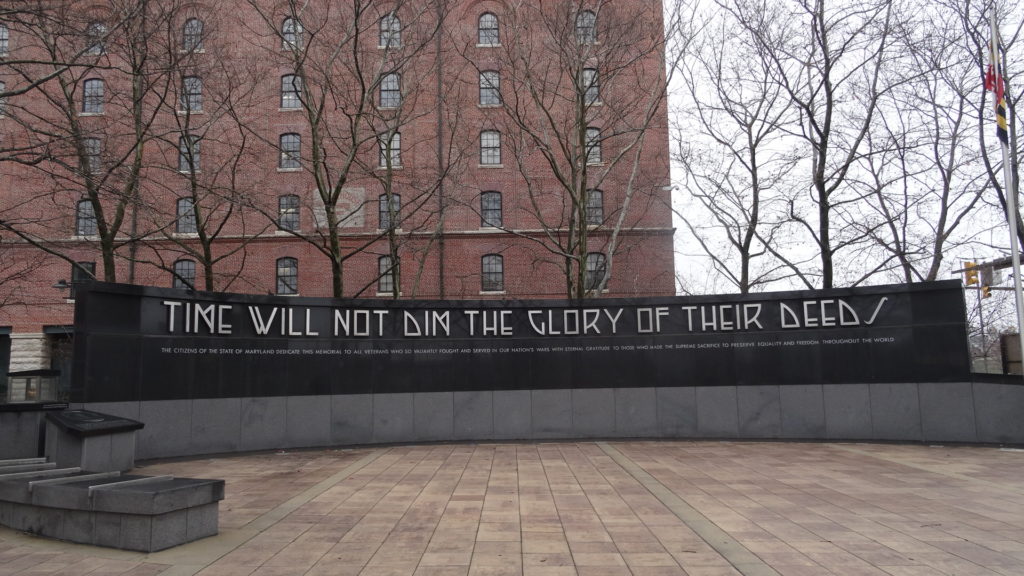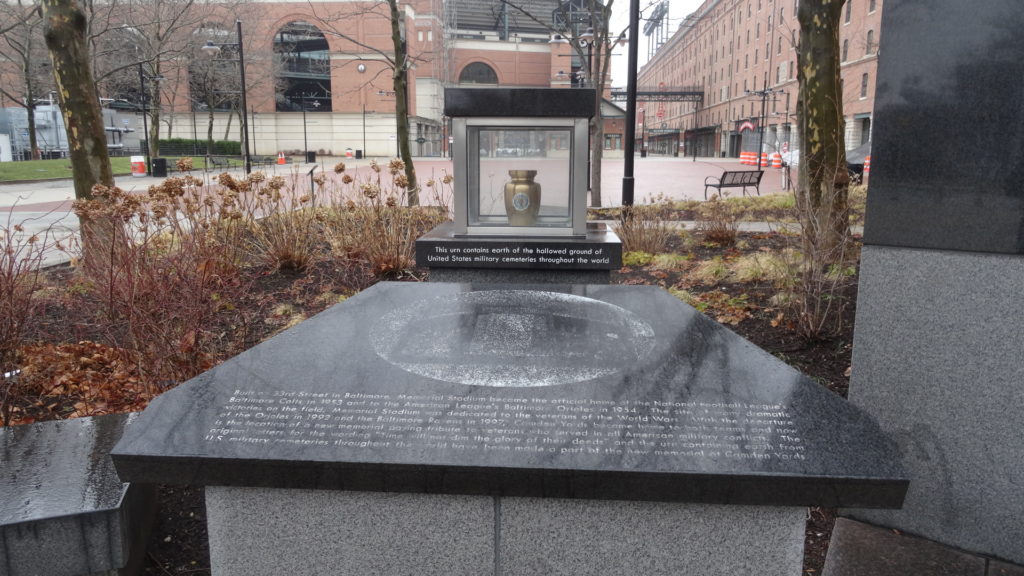This feature is the beginning of a new series, Ballparks That Live On. Ballparks That Live On will look at how bygone ballparks have been repurposed since their closing. In today’s edition: Memorial Stadium.
When the final pieces of Memorial Stadium came down in 2002, it marked the conclusion of the contentious debate surrounding one of Baltimore’s preeminent sports venues. The former home to the Baltimore Orioles, Baltimore Colts and Baltimore Ravens had been vacant for several years, but in the late 1990’s and early 2000’s many advocated for preserving the stadium in some form.
Sentimentality characterized many preservation arguments—after all, the history of sports in Baltimore cannot be told without Memorial Stadium, which helped Baltimore become a major league city and hosted many memorable moments in both baseball and football over a span of decades. Beyond that, however, was what Memorial Stadium more deeply represented: a dedication to the fallen soldiers of World War I and World War II.
Sports had been hosted at the site on 33rd Street going back to 1922, when Municipal Stadium first opened. Memorial Stadium began taking shape when its lower deck was added in 1950, with the upper deck added in 1954 as part of an expansion to accommodate the newly-arrived Orioles. One of the focal points of the expansion was a 116-foot-tall exterior wall that was eventually dedicated as a war memorial.
The memorial and its stainless-steel letters were both powerful in their aesthetics and dedication, with the phrase TIME WILL NOT DIM THE GLORY OF THEIR DEEDS characterizing the wall. The wall, and other parts of Memorial Stadium, became centers of debate in the late 1990’s after the Ravens left the stadium following the 1997 NFL season in favor of a new facility in downtown Baltimore.
With the Ravens and Orioles—who moved to Oriole Park at Camden Yards before the 1992 season—both at new downtown facilities, the days of major sports at Memorial Stadium were over. No logical use for the stadium was imminent in its larger form, but some master plans called for the stadium to be scaled down and repurposed, with others advocating for the preservation of the memorial wall.
Ultimately, it was decided by the City of Baltimore that the stadium would be demolished, clearing the way for a housing development and new YMCA. Once much of the rubble from Memorial Stadium was deposited into the Chesapeake Bay—where it became an oyster reef—the stadium was seemingly reduced to a mere memory. However, through time, the legacy of Memorial Stadium spread, with physical reminders surfacing both at Camden Yards and on 33rd Street.
The memorial wall that characterized Memorial Stadium was at one point slated to be preserved at the Memorial Stadium site, and for many months stood apart as the rest of the facility was demolished. It was ultimately unsuccessful in avoiding the wrecking ball, as many objected to the look of the structure—which suddenly seemed obtrusive and out of place without the rest of the facility.
Therefore, the wall finally met its demise in early 2002—months after demolition of the stadium was completed. Shortly thereafter, the first physical sign of Memorial Stadium’s newfound impression took shape outside the facility that contributed to its end.
In 2003, a new memorial was dedicated outside of Oriole Park at Camden Yards. Located at the south end of the B&O Warehouse, the new memorial came with a distinguished feature: the original letters that spelled out TIME WILL NOT DIM THE GLORY OF THEIR DEEDS.
Much as they did at their original location, the letters offer another layer of significance at the new memorial, which features a contrast to the one on 33rd Street. The memorial is dedicated to veterans of all American wars past and present, rather than a specific tribute to those who served in World War I and World War II.
The monument also includes an urn with soil from United States military cemeteries. The urn was placed in Memorial Stadium as part of a formal dedication in 1956, and currently sits on a monument that reminds visitors of the stadium that stood at 33rd Street.
Beyond that dedication, it seemed that Memorial Stadium would have no other legacy in Baltimore, especially since the broader redevelopment for the site was not expected to include any elaborate tributes. A bell tower and plaza occupies what was roughly the spot of the memorial wall, and much of the housing sits on what would have been the parking lot.
However, a plan that emerged from the Cal Ripken Sr. Foundation wound up assuring that Memorial Stadium was commemorated on 33rd Street. Starting with a fundraising effort in 2009, the foundation went to work on developing a multipurpose youth sports field on the site.
The end result was a $1.5 million project that gave the YMCA field space, and honored the legacy of Memorial Stadium. Home plate for the baseball field is located at the same spot as home plate for Memorial Stadium. To incorporate the multipurpose aspects, planners placed an upright beyond centerfield, thereby following the same layout of the football field at Memorial Stadium.
The field was dedicated in December 2010. Currently, the site features multiple plaques that educate visitors on the history of Memorial Stadium, and a dedication to Cal Ripken Sr. is included as well. The playing surface consists of sports turf, which allows it to easily convert from baseball to football, to soccer, and more.
For visitors, the space provides some reminders of Memorial Stadium and a connection to the bygone ballpark. More importantly, however, the field ensures that the Baltimore community will continue to have a connection through sports to the site for generations.
Years after its demise, Memorial Stadium’s presence can be felt at not only its former site, but at the location where new memories are being made for Baltimore sports fans. While some may have wished its presence would continue for years to come, the fact that it lives on in these forms today shows a remarkable form of resiliency, as Memorial Stadium refused to go away without a trace.
All images by Zach Spedden.
This article first appeared in the weekly Ballpark Digest newsletter. Are you a subscriber? It’s free, and you’ll see features like this before they appear on the Web. Go here to subscribe to the Ballpark Digest newsletter.




